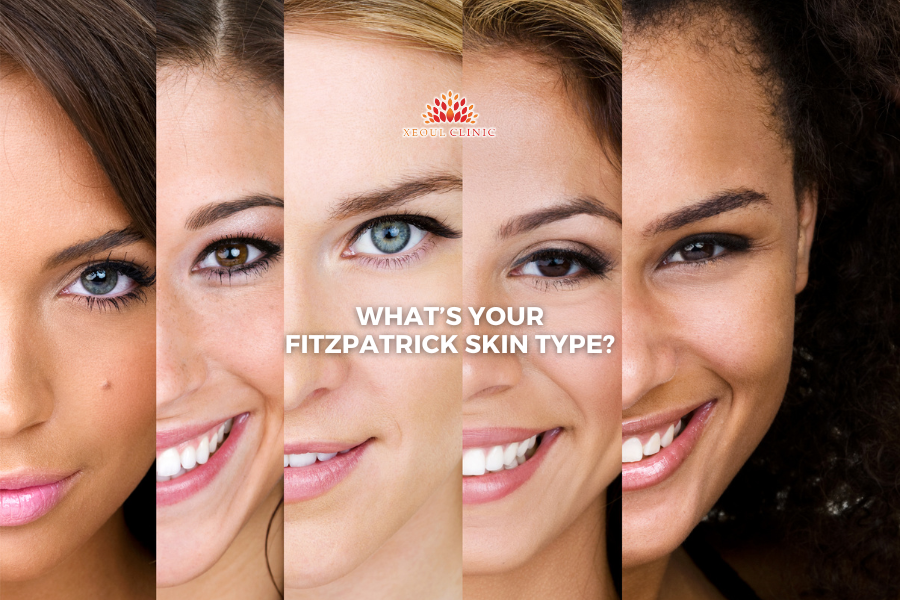Have you ever wondered why some people seem to tan easily while others burn after just a few minutes in the sun? One useful tool for categorising skin types is the Fitzpatrick scale, which classifies skin into six skin types, ranging from very fair (type I) to very dark (type VI), each with distinct characteristics regarding sun sensitivity, sunburn tendency and tanning ability.
What is the Fitzpatrick Scale?
The Fitzpatrick Scale, developed by Harvard dermatologist Thomas B. Fitzpatrick in 1975, is a widely used classification system used to categorize human skin tones based on how they respond to UV light exposure. It takes into account genetic factors such as skin colour, hair colour, eye colour and the skin’s tendency to burn or tan.

The Six Fitzpatrick Skin Types:
Type I (Very Light): Always burns, never tans People with type I skin typically have very fair skin, light eye and light hair. They are highly susceptible to sunburn and have a high risk of skin cancer.
Type II (Light): Burns easily, tans minimally Individuals with type II skin have fair skin that may tan slightly with prolonged sun exposure but is prone to burning. They are at an increased risk of sun damage and skin cancer.
Type III (Light to Medium): Burns moderately, tans gradually People with Type III skin may burn initially, they can develop a tan with sun exposure, although they should still take precautions.
Type IV (Medium): Burns minimally, tans easily People with type IV skin have a moderate risk of sunburn and are more likely to tan than burn.
Type V (Medium to Dark): Rarely burns, tans easily Type V skin individuals have a lower risk of sunburn but should still practice sun protection.
Type VI (Very Dark): Never burns, tans deeply Individuals with type VI skin have the darkest skin tones. They have the highest levels of melanin and are least likely to experience sunburn but should still protect their skin from UV damage.
Why Does Fitzpatrick Skin Type Matter?
Knowing your Fitzpatrick skin type can help you to determine your risk of sun damage, skin cancer and premature aging. It also guides your approach to sun protection, skincare and even safety of aesthetic procedures.
Conclusion
Understanding your Fitzpatrick skin type is key to maintaining healthy, radiant skin and reducing your risk of sun damage and skin cancer. By knowing your skin’s unique characteristics, you can take proactive steps to protect and care for it appropriately. Remember, no matter your skin type, sun protection is essential for everyone.
Author: Dr Lim Xin Ying, 10th May 2024

